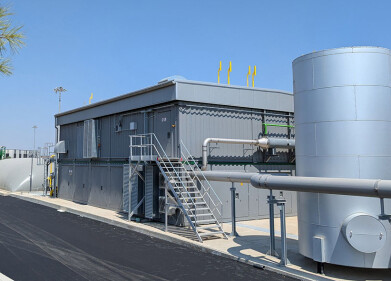Air clean up
How to Reduce Pollution Risk in your Car
Oct 02 2020
Drivers and passengers can drastically reduce their exposure to harmful air pollution by adjusting the ventilation settings on their car and altering their route. Those are the findings of a new study from the University of Birmingham, which looked at how people can improve the air quality inside their vehicle even when pollution levels remain high outside of it.
The most effective method of reducing pollution risk inside the car is by closing the windows, turning the air conditioning on and making use of the “recirculation” feature. Meanwhile, taking a route which is less prone to heavy traffic can also make a big difference in how much contamination the occupants of a vehicle are exposed to during their journey.
An invisible killer
A significant percentage of urban air pollution derives from road transport. In addition to the nitrogen oxides (NOx) and particulate matter (PM) spewed out by vehicle tailpipes, there are also non-exhaust emissions such as those created from braking, tyre dust and road wear and tear to consider as well.
With the advent of sophisticated new particulate matter sensing equipment, the scale of the problem is only just beginning to become clear. However, it’s estimated that around seven million people lose their lives prematurely each year due to respiratory and cardiovascular ailments linked to poor air quality. Approximately 40,000 of those deaths take place in the UK.
In response, the UK government has explored a raft of measures aimed at improving air quality and reducing transport related pollution, such as introducing ultra-low emissions zones (ULEZ), prohibiting idling engines and encouraging the use of public transport. However, most of these measures are aimed at improving external air quality with one eye on pedestrians and cyclists, while little attention is paid to the air quality inside the vehicles themselves.
Ventilation is vital
In order to provide guidance for drivers on how best to avoid exposure to the aforementioned contaminants, scientists from the University of Birmingham conducted experiments wherein four vehicles were driven across the same routes in the city centre several times. Each time, the ventilation settings were adjusted slightly to discover how that might affect levels of NOx and PM inside the car.
They found that driving with the optimum ventilation parameters – that is, with the windows up and the AC on using recirculation – could reduce exposure to PM by almost half (49%). Concentrations of NOx fell by a similarly impressive percentage (34%), meaning a simple change in driving habits could yield consider health benefits for those undertaking the journey on a daily basis.
Those behind the study have indicated that there are a number of factors at play, including the route driven, the time of day, the type of vehicle, the rate at which the drivers and passengers are breathing and the different types of ventilation settings within the vehicle itself.
Events
May 11 2025 Vienna, Austria
May 18 2025 Algiers, Algeria
23rd International Water Management Exhibition
May 20 2025 Prague, Czech Republic
Singapore International Water Week Spotlight 2025
Jun 23 2025 Singapore
Jun 25 2025 Sao Paulo, Brasil














